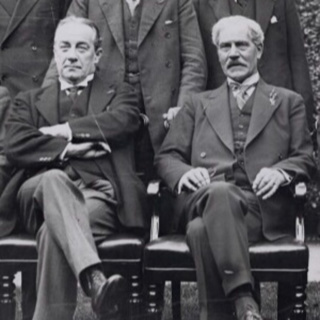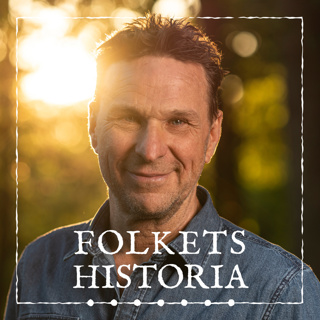
120. Two remarkable women
Mary Seacole, Jamaican and Mixed Race, and Florence Nightingale, White and from the English middle class, both in different ways did extraordinary work in Crimea as nurses. They both opened the doors to a different kind of nursing, in which practical steps such as good hygiene was vital, alongside a caring attitude towards patients. The two met but never worked together. For the kind of radical change in nursing they ushered in, both showed the necessary qualities to an impressive extent. However, Seacole found that the authorities, and even Nightingale herself, made it far harder for her to be allowed to give all she could to the sick and wounded of Crimea. Which makes it hard not to ask, as she did, whether it might not be because her “blood flowed beneath a somewhat duskier skin than theirs”. Illustration: Mary Seacole by Albert Charles Challen, National Portrait Gallery 6856 (image reversed left-to-right), and Florence Nightingale by Jerry Barrett, National Portrait Gallery 2939 Music: Bach Partita #2c by J Bu licensed under an Attribution-NonCommercial-No Derivatives (aka Music Sharing) 3.0 International License.
11 Dec 202214min

119. Ending a war, replacing a government
Conditions in Crimea were appallingly bad, and all sides lost more men to disease than in combat. Britain did particularly badly in the first year, when the French performed rather better. However, in the second year (two years, note: the quick war the Allies had hoped to fight had transformed into a grind) the British did far better, and much of that was down to a radical change in healthcare. Next episode we’ll be looking at two people who played key roles in that process, Florence Nightingale and Mary Seacole. With the slow siege of Sevastopol grinding on with little progress, while the cost in lives and treasure constantly climbing, the government eventually fell. The hunt for a new one revealed two striking facts: William Gladstone was an increasingly key figure in British politics, and the pressure propelling Palmerston onwards and upwards was finally going to get him into Downing Street. He would be in charge in Britain as the war ended, with limited concessions from Russia, all of which would be reversed within 24 years. Leaving the question, was it all worth it? And wouldn’t the expenditure, seven times higher than relief for the Irish famine, have been far better spent there than on this bitter, costly and ultimately unproductive war in Crimea? Illustration: Combat dans la Gorge de Malakoff by Adolphe Yvon: the French capture of the Malakoff,. Public Domain. Music: Bach Partita #2c by J Bu licensed under an Attribution-NonCommercial-No Derivatives (aka Music Sharing) 3.0 International License.
4 Dec 202214min

118. Someone had blundered
Extraordinary! For once, instead of being at war with each other, Britain and France are going to war together against someone else. In this instance, Russia. And eventually in Crimea. Where the war is pretty much a constant succession of cockups, mostly by Britain, but from time to time by France too. One of the most spectacular is also the most celebrated moment from that whole ghastly war, the Charge of the Light Brigade. Usually presented, not least by Alfred Lord Tennyson in his poem , as heroic it is in fact a ghastly case of incompetence compounded by personal conflicts leading to needless deaths for no useful gain. Emblematic of the whole war, as it happens. Illustration: The Relief of the Light Brigade by Richard Caton Woodville, Jr., public domain, via Wikimedia Commons Music: Bach Partita #2c by J Bu licensed under an Attribution-NonCommercial-No Derivatives (aka Music Sharing) 3.0 International License.
27 Nov 202214min

117. Russian Bear
Just as, after the Second World War, the Western European powers were grateful to Russia for using its colossal military force to ensure the defeat of Hitler’s Germany, while still being frightened of that military, so in the 1850s, those same powers were grateful for the role Russia played in bringing down Napoleon, while feeling nervous about the huge military power it had used. By that time, Russia’s threat was growing again. The Tsar, Nicholas I, saw himself as the protector of Orthodox Christians and Slavs. Everywhere. That included the 14 million inside the Ottoman (Turkish) empire. When he issued a demand to be officially granted authority to provide such protection, and that demand was rejected, Russia and Turkey slid quickly to war. The Western Powers watched aghast. Despite their ancient rivalry, even France and Britain, pulled together in the face of this Russian action. Gradually, and against the resistance of many, even at the top of government, the two nations found themselves compelled towards war. It was finally declared, by both Britain and France, in March 1854. Setting the stage for what would come to be known as the Crimean War. Illustration: Ivan Aivazovsky’s 1853 The Battle of Sinop (Wikimedia Commons) Music: Bach Partita #2c by J Bu licensed under an Attribution-NonCommercial-No Derivatives (aka Music Sharing) 3.0 International License.
20 Nov 202214min

116. Two governments, two rivals
The tale of the first government led by the Earl of Derby (whom we first met as Lord Stanley), in which Benjamin Disraeli served as Chancellor of the Exchequer, from its start to its fall such a short time later. And then, the start of the Aberdeen government, in which the same post was held by William Ewart Gladstone, perhaps rather more successfully. He did have one major advantage, granted by simple circumstance, but even so, there's no denying he did better. So this is also the episode where we first meet the intense, and from then on lifelong, hostility between Gladstone and Disraeli. A hostility which led to battles between these two giants that would dominate three decades of British politics. And, in their confrontation, it has to be said that first blood went to Gladstone. Illustration: The Bucks election - Mr Disraeli addressing the electors in the County Hall, Aylesbury, 1852, by Frederick James Smyth (National Portrait Gallery D45902) Music: Bach Partita #2c by J Bu licensed under an Attribution-NonCommercial-No Derivatives (aka Music Sharing) 3.0 International License.
13 Nov 202214min

115. Who? Who? and a Great Show
It was time for Disraeli to break through. Not yet to the top job: that, as Melbourne had predicted years before, would go to Stanley, now known as Derby. But Disraeli would land a big job in government, that of Chancellor of the Exchequer. Not an easy job for a man who was no financial expert. His major challenge was that he represented a political group opposed to the Repeal of the Corn Laws, just when Britain was at the top of its world leadership in economics, to which that repeal had contributed: the British had created a business environment that could benefit fully from free trade internationally (at least where it suited them). British success would be celebrated in a colossal show, the Great Exhibition, to be attended by millions, many of them taking advantage of the new mobility provided by the railway age. Meanwhile, Disraeli would be set the task of coming up with a budget in keeping with the times, but which would secure the support of people focused on the interests of the one group that had suffered most from the loss of tariff protection, the gentlemen farmers, with good landholdings though not as massive as those of the great noble families. Keeping them loyal mattered, since Derby and Disraeli's wing of the Conservatives was short of support (and of talent) after the business interests had deserted them to go with Peel. Illustration: The British contribution to the Great Exhibition, from Dickinson's Comprehensive Pictures of the Great Exhibition of 1851 (public domain) Music: Bach Partita #2c by J Bu licensed under an Attribution-NonCommercial-No Derivatives (aka Music Sharing) 3.0 International License.
6 Nov 202214min

114. A revolution that didn't happen and a breakthrough that did
We’re back in 1848, with the Year of Revolutions, a few of which succeeded, most of which were put down – not least in Northern Italy, where Joseph Radetzky, celebrated in a cheerful Strauss tune, proved far less cheerful in his treatment of opponents to Austrian rule. Britain, on the other hand, saw no revolution, though many feared one from the Chartists. In the event, the last shout of Chartism turned out to be little more than a whimper, disarmed by improved economic conditions and channels to funnel protest into less harmful directions. !848 also saw the moment when the majority wing of the split Conservative Party, the Protectionists, opposed to Repeal of the Corn Laws, could have found a new leader in Benjamin Disraeli. But he was just too eccentric, perhaps too Jewish, somehow too foreign, and he was passed over. The first of several occasions when he was denied, until late 1851. Then he at last secured the position of Leader of the Party in the Commons (under the overall leader, Stanley). At least that meant that he was in a leading position just as his party formed a government again. So he was poised to enter government for the first time, and in a senior position too. Illustration: On the barricades on the Rue Soufflot, Paris, 25 June 1848 by Horace Vernet Music: Bach Partita #2c by J Bu licensed under an Attribution-NonCommercial-No Derivatives (aka Music Sharing) 3.0 International License.
30 Okt 202214min

113. Russell, Palmerston and tit-for-tat politics
We saw last week that the Russell government stood back from the Great Irish Famine to the point of practically criminal negligence. But what was it doing in the meantime? Well, it turns out that it wasn’t achieving much. It was a minority government, only able to hang on to office because of the divisions in the Conservative Party. Indeed, the most dramatic events mostly surrounded the figure of the Foreign Secretary, Lord Palmerston. His most remarkable action as his behaviour over the Don Pacifico affair, a striking example of the use of gunboat diplomacy. It was also another instance of the maverick behaviour which ultimately led to his fall. And, thanks to his tit-for-tat with John Russell, that was quickly followed by the fall of the whole government. It had stayed in office thanks to the divisions in the main Opposition party, and it was brought down by the divisions in its own. Illustration: Pen and ink portrait of Lord Palmerston, by Harry Furniss National Portrait Gallery 6251(46) Music: Bach Partita #2c by J Bu licensed under an Attribution-NonCommercial-No Derivatives (aka Music Sharing) 3.0 International License
23 Okt 202214min





















